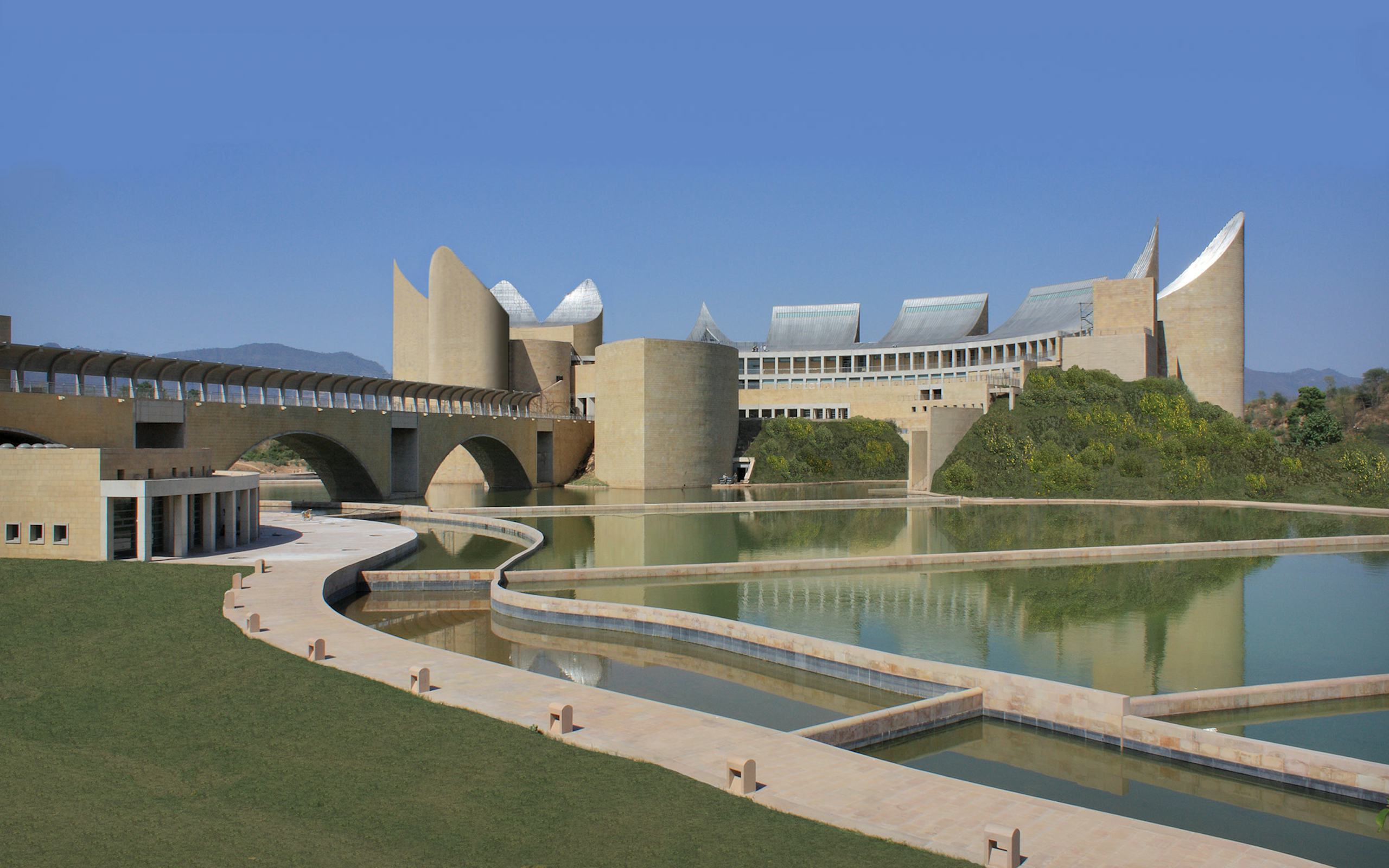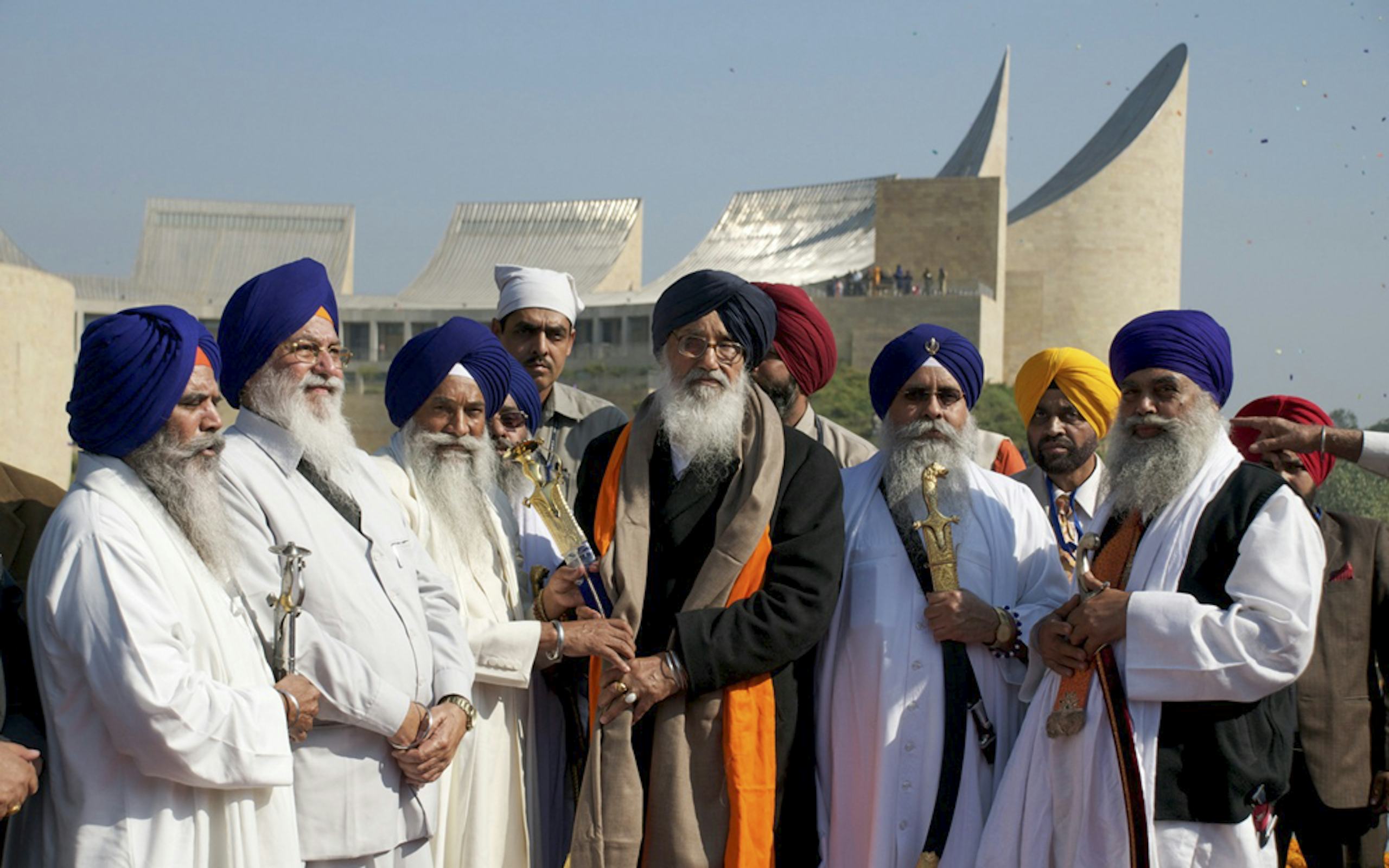Virasat-e-Khalsa Museum
The Khalsa Heritage Centre is a museum of the Sikh people located in the holy town of Anandpur Sahib, near Chandigarh in the Punjab state. The museum celebrates 500 years of Sikh history and the 300th anniversary of Khalsa, the scriptures written by the 10th and last Guru, Gobind Singh, founder of the modern Sikh faith.
Located on a 75-acre site overlooking the town, the Centre is divided into two functionally integrated sets of buildings, which straddle either side of a ravine and are connected by a bridge. The western complex, connected to the town of Anandpur Sahib, is organized around an entrance piazza and contains a 400-seat auditorium, a two-story library, and temporary exhibition galleries. A 540-foot long bridge from the western complex crosses a seven-acre network of reflecting pools, providing access to the eastern complex, which houses permanent exhibition spaces. The eastern complex consists of two clusters of undulating galleries that evoke the fortress architecture of the region and form a dramatic skyline against the surrounding sand cliff terrain and Himalayan foothills in the distance.
Deeply rooted in its surrounding landscape and resonating with regional architecture, the Centre seemingly rises from nearby sand cliffs. A defining aspect of the project is the use of local materials and craftsmanship. To best express the mission and locale of the holy site, the buildings are a combination of concrete and local sandstone, with stainless steel roof forms to stand up to the extreme weather conditions in the Punjab.
The site is a true pilgrimage destination. The public enters the Museum from two directions – by foot from the town to the southwest and by car from the northeast. From the southwest the public crosses a bridge from town to the western gateway complex. The entrance is convenient for those on foot: pilgrims visiting the Gurdwara and Fort. Pedestrians cross the ravine to the eastern Museum building via a bridge equipped with a cover for protection from the sun and rain. Visitors arriving by car or bus may park in the lot to the east of the Museum complex. They may ascend from the parking lot into the lobby or descend from a drop-off circle to the Museum’s central lobby. Thus, all those coming from east or west arrive at the same lobby at the lower level of the Museum.
A series of dams in the ravine create pools that reflect the complex at night.
Visitors are immersed in a path through the galleries. The exhibits are a combination of large hand-painted murals, dioramas, relief paintings and 3D interpretive structures as well as hand-woven tapestries. A key feature is the interpretive exhibit in the boat building celebrating the Punjabi culture and spirit.
The galleries are designed as an immersive experience, which are accessible to all and can be read without traditional text. The story of the Sikhs is told in tapestries woven by local craftsmen. The Petal Gallery is one of the most dynamic galleries for visitors. Conceived as a repository of the rich heritage of the Khalsa, showcasing the history and culture of Punjab, the center has been built on a 100-acre site to emphasize the eternal message of the Sikh gurus. Through a variety of devices, the museum depicts the struggle, courage, sacrifice, and excellence of this community since the birth of Sikhism five hundred years ago.












